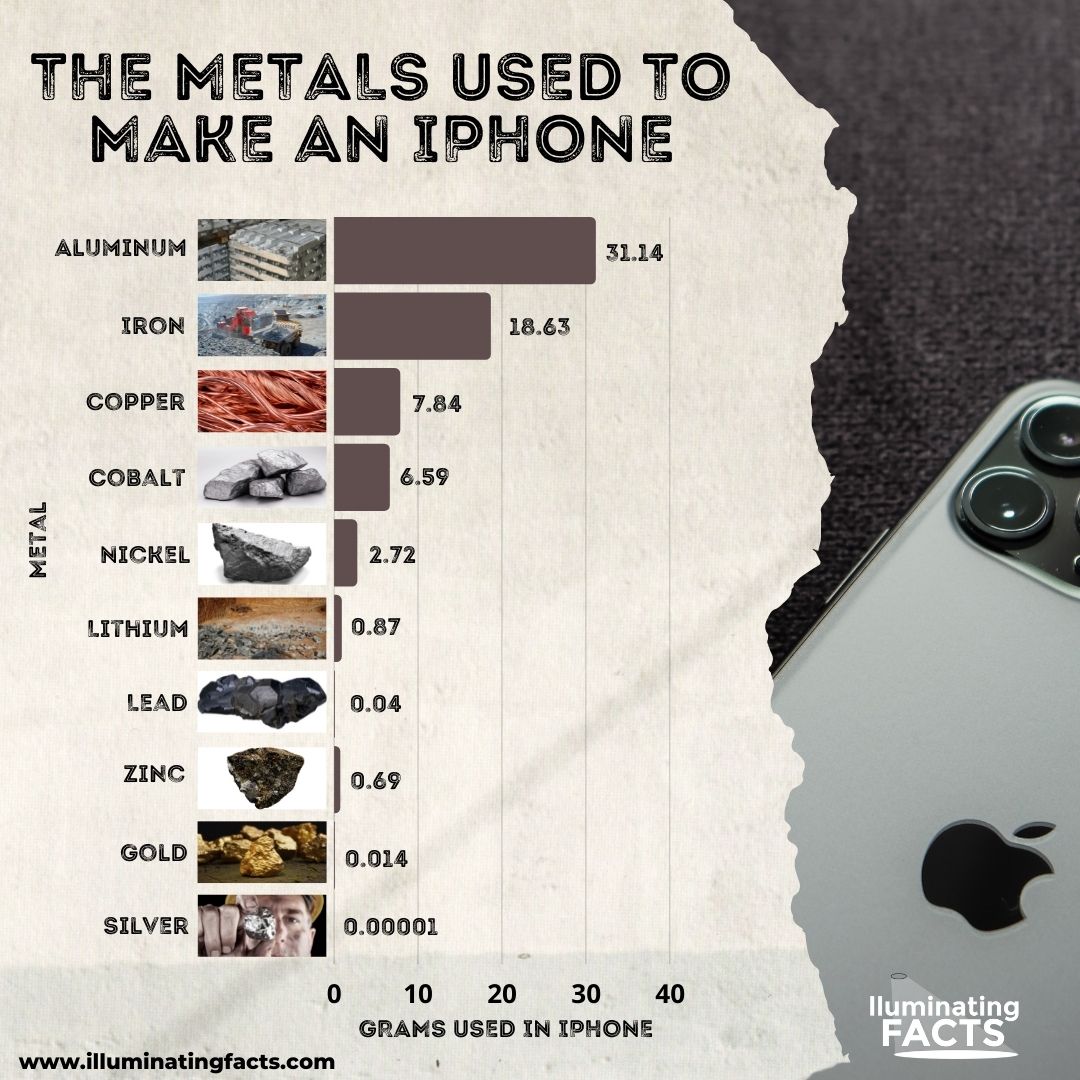Apple iPhone is perhaps the most popular brand of a mobile phone these days, especially in the US, where the iPhone is the most used smartphone. About 46% of people in the US declared iPhones to be their choice of smartphones.
The first iPhone was announced by Steve Jobs on January 9th, 2007, with a 3.5-inch screen and a 2-megapixel camera. Though it was limited in its features and priced at $499, iPhones have come a long way since, with better and improved models launched each year.
iPhones may have become one of the most bought technological devices, but their making isn’t an easy process. An iPhone is made from many raw materialsit extracted from the Earth. About 46 different elements are used to make an iPhone, including metals and non-metals.
Non-metals and metalloids such as carbon and silicon make up about 15.4% and 6.3% of the iPhone’s mass. Fluorine and sulfur are used, with trace amounts of arsenic also being present. The elements are extracted from countries including the US, Mongolia, Chile, and many other countries.
The top metals used to make an iPhone are discussed below:
1. Aluminum
iPhones are mostly aluminum, which makes up about 24% of an iPhone’s mass. In iPhone 6, about 31.14 grams of aluminum were used.
Though it is the most abundant metal found in the Earth’s crust, it is not found in its pure form. Because of its affinity for oxygen, it exists mostly in the form of oxides. Hence, it is extracted from bauxite ores and refined, adding to the cost.
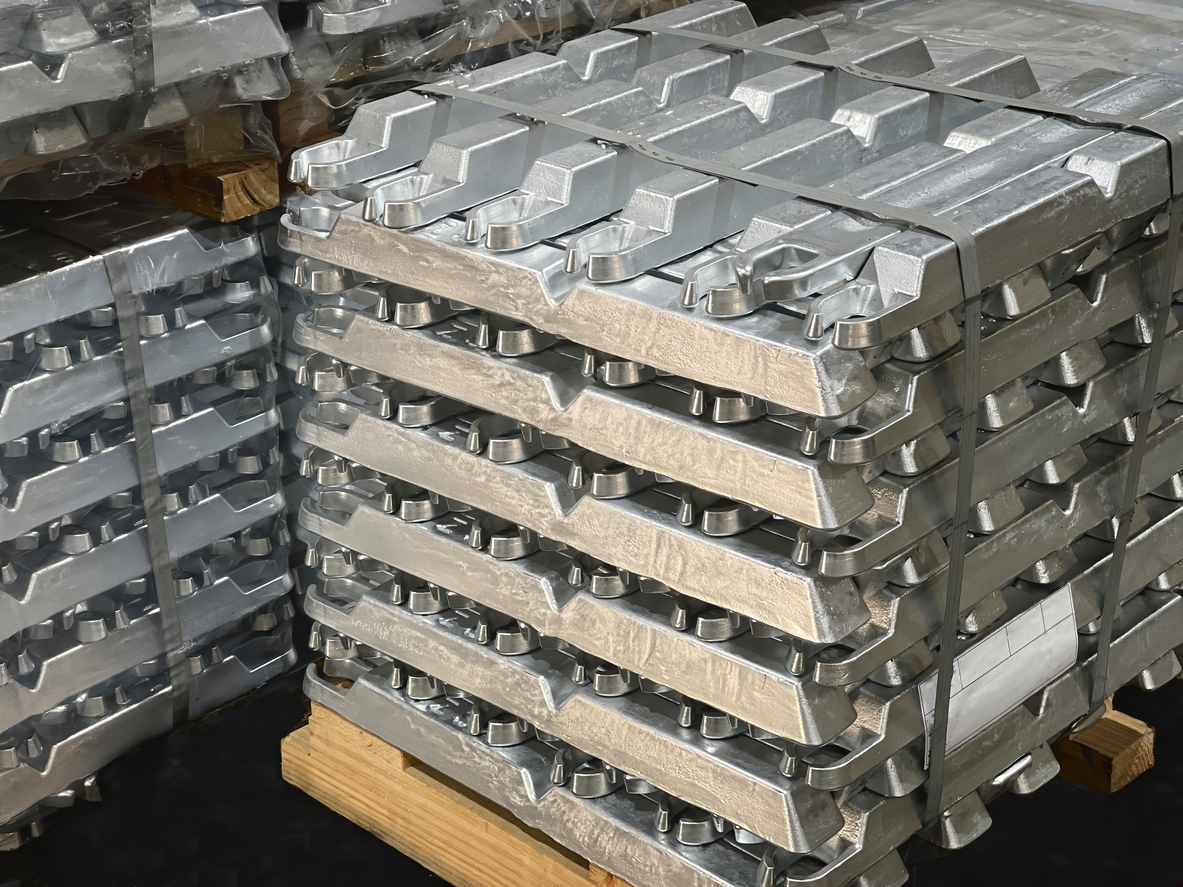
Aluminum is most abundantly found in Australia, Brazil, and India. While China is the world’s largest aluminum producer, the US mostly imports it from Canada. Aluminum is relatively cheap and lightweight, making it ideal to use in manufacturing iPhones.
Aluminum is used in making more than one component of an iPhone. The outside case is made of aluminum which constitutes about a quarter of the total weight of the device. It is also used to make batteries along with Lithium and Cobalt. [1]
2. Iron

Iron makes up about 14% of an iPhone’s mass. Being a reactive metal, it is not found in its pure form. It has to be extracted from the Earth’s core from its oxides. The oxygen is removed in large blast furnaces, making the process quite expensive.
Brazil and Australia are the world’s largest producers of Iron. The US imports iron primarily from Brazil, with 55% of all iron in the US being imported from Brazil.
In an iPhone, iron is used to make high-quality speakers and headphones. Getting loud sounds from a small area takes work, making iron one of the best materials to make speakers, neodymium, and boron. [2]
3. Copper
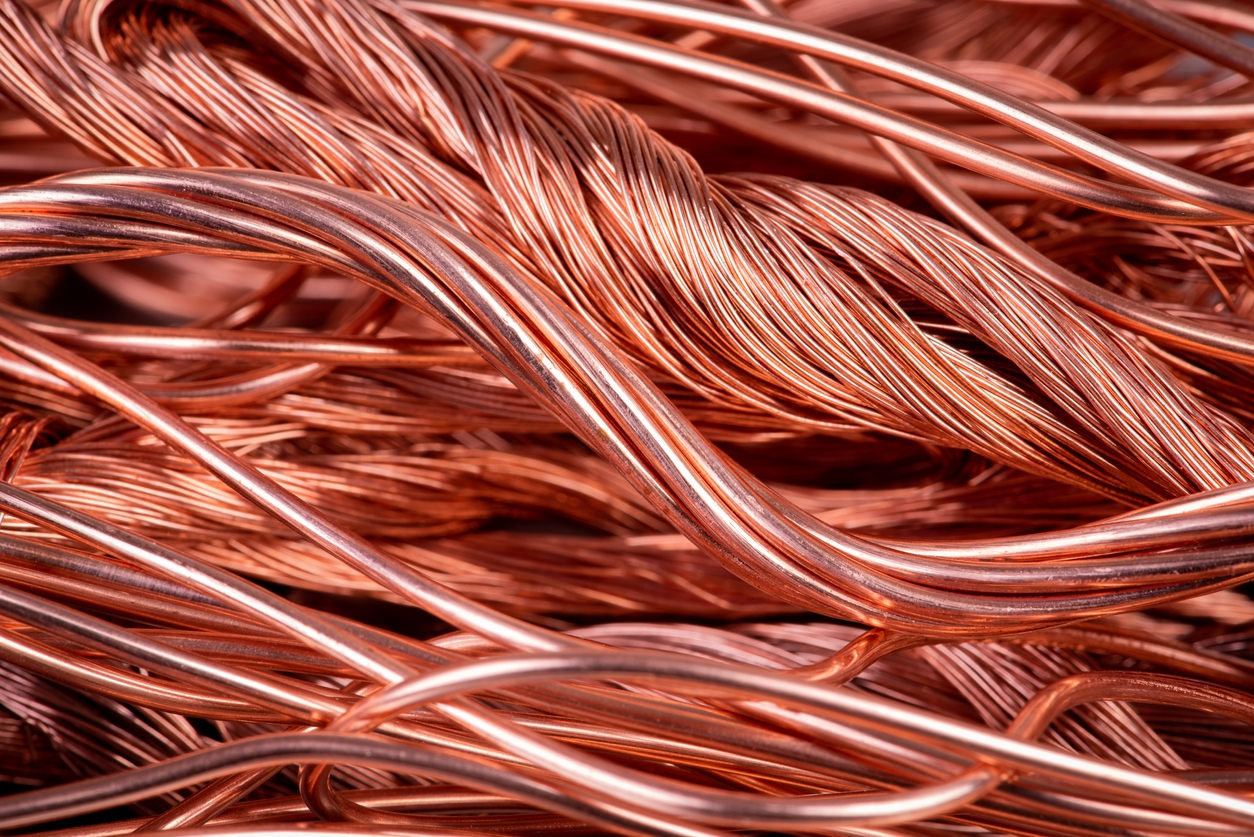
Depending on the iPhone model, an iPhone has approximately 6-8 grams of copper. In an iPhone 6, 7.84 grams of copper is found.
Copper is mostly extracted from sulfide and oxide ores. Then, the copper is concentrated to make a purer version. Copper is a non-renewable resource.
Chile is the largest producer of copper in the world and produced about 5.8 million metric tons of copper in 2017. Peru is the 2nd largest producer of copper.
Copper is used to make electrical connections within the iPhone because of its conductive properties. [3]
4. Cobalt
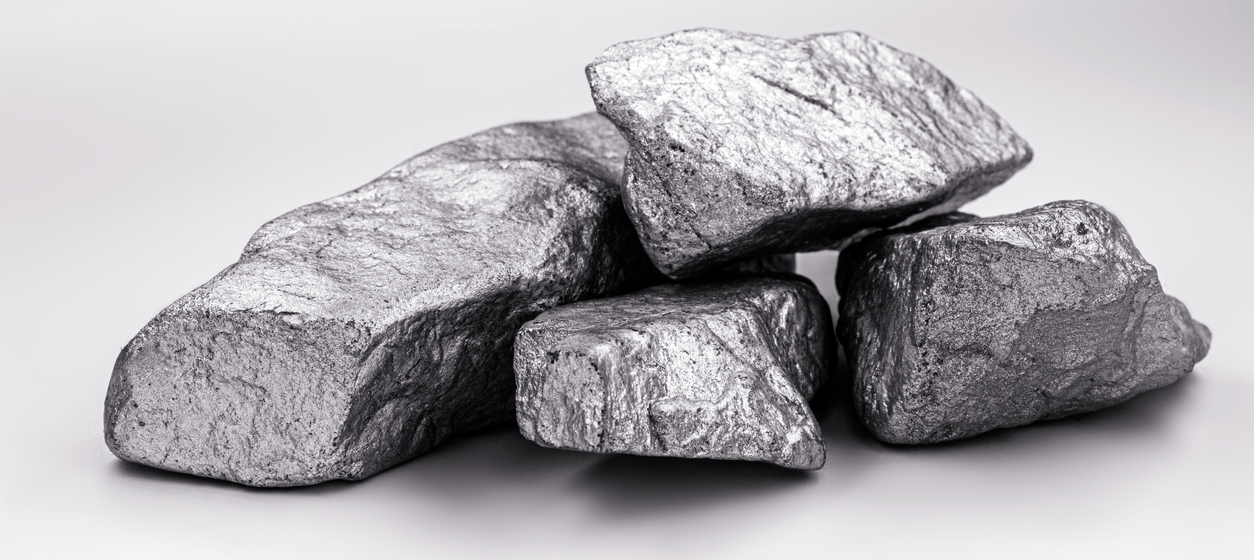
Cobalt is a hard metal of a silver-gray color. It is found in the Earth’s crust in chemically combined forms and has to be extracted from alloys of natural meteoric iron.
The Democratic Republic of Congo is the largest producer of cobalt in the world, amounting to about 60% of the world’s total production. Apple also extracts cobalt from Congo, but it has been involved in controversies when children were found to be mining cobalt. However, Apple then canceled the use of cobalt from the region.
In an iPhone, cobalt is used to make the phone’s Lithium Iron Phosphate batteries as it is considered a good conductor of electricity. [4]
5. Nickel
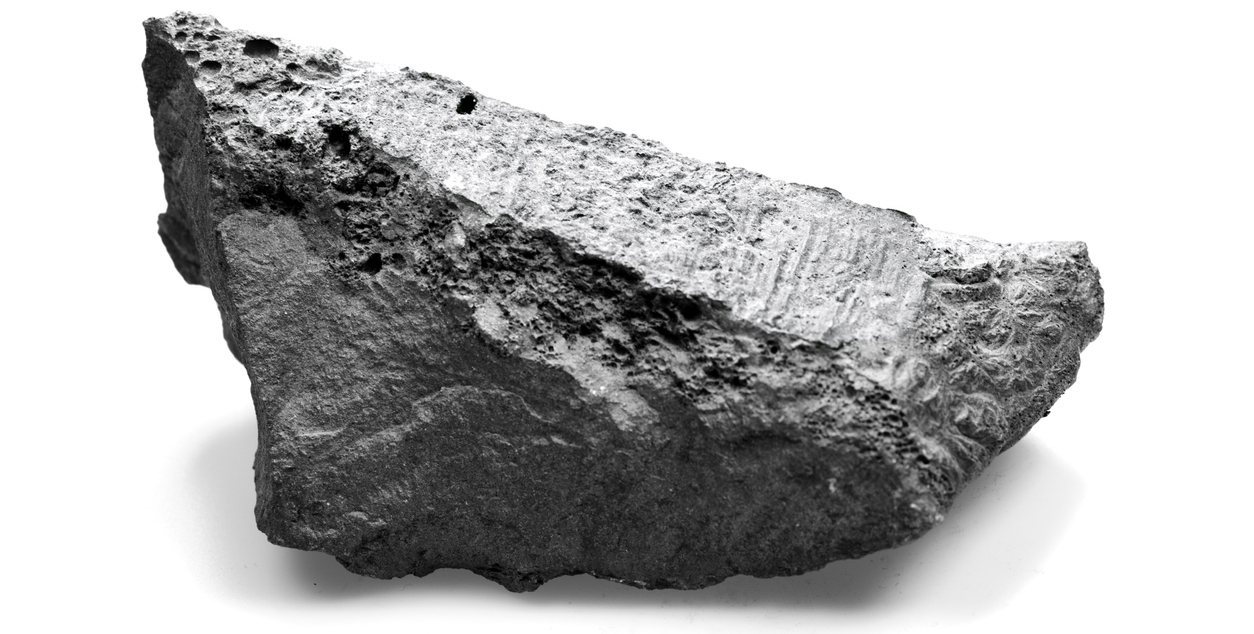
Nickel is a hard metal that is also very ductile. It is found in the Earth’s crust in the form of ores, including pentlandite, garnierite, and limonite.
It is a relatively expensive metal compared to iron, aluminum, or copper. Indonesia, the Philippines, New Caledonia, Russia, and Australia are the world’s largest nickel producers as of 2021.
iPhones contain about 2.7 grams of nickel, accounting for about 17.1% of the total mass. Nickel is used in making the iPhone’s microphone. [5]
6. Lithium

Lithium is found in trace amounts in rocks, ground, and sea waters. Chile is the largest producer of lithium globally, where it is found in underground salty water reserves.
Lithium mining is dangerous as it has the side effect of polluting water resources. If it affects water supplies, it might even poison the drinking population. Lithium is primarily used in phone batteries, making up about 0.67% of the iPhone’s total mass. [6]
7. Lead
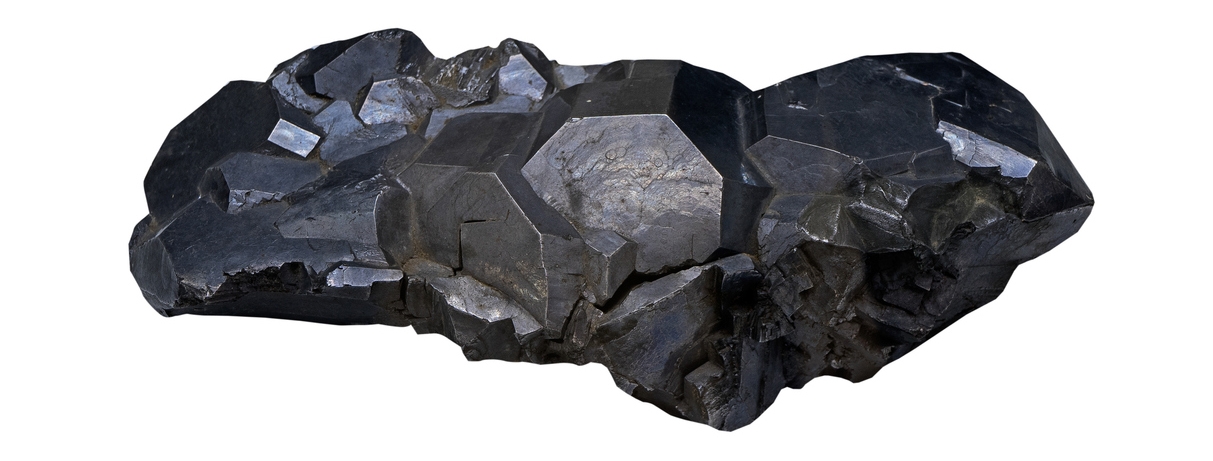
Lead is a soft silvery metal that is very malleable and ductile. However, it is a very poor conductor of electricity. Lead is usually found in Earth’s Crust in the form of ores such as Galena.
China is the world’s largest lead producer, followed by Australia and the United States.
In iPhones, it is used for soldering to keep the various parts of the phone joined together. However, it is also a highly toxic element. Prolonged exposure to lead can lead to many health issues, including anemia, weakness, dementia, and kidney damage. All kinds of exposure, including swallowing and inhaling lead, can cause problems.
According to many reports, iPhones are known to increase our lead exposure. Lead emissions during the disposal of phones and mining have led to many health problems, especially in 3rd world countries. Most lead waste is exported to China, India, Pakistan, and Vietnam, which has also caused health issues in these countries. [7]
8. Zinc
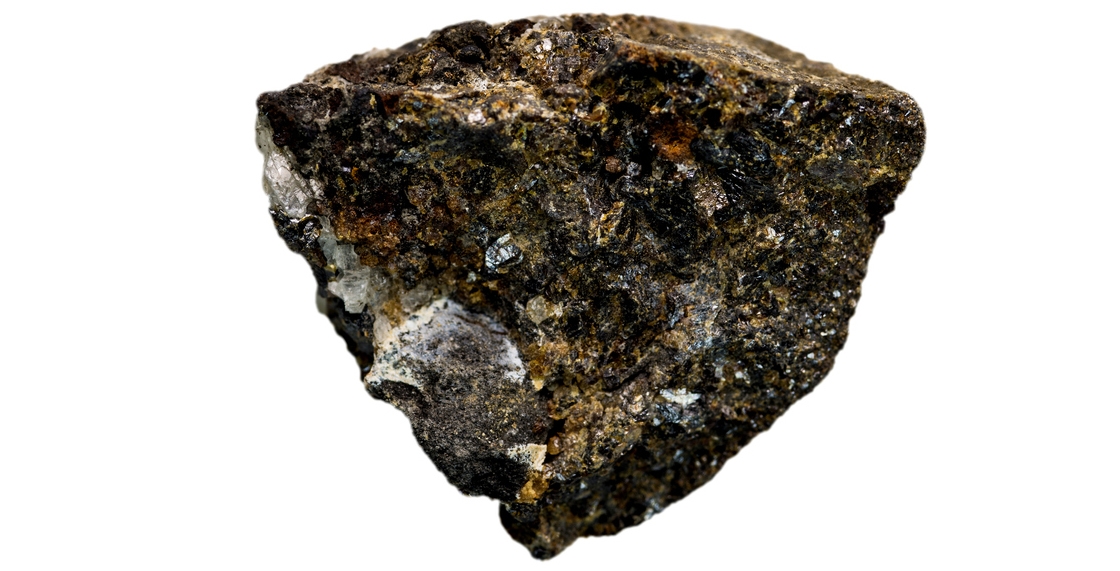
Zinc is a brittle metal and has a silvery-grayish color. It is extracted by electrolysis from zinc sulfate, where it deposits on the cathode and is collected from there.
Like all other elements, mining zinc brings up a lot of issues. For instance, in 3rd world countries, mining zinc is often involved in child labor. Mining also causes pollution, which has detrimental health effects. Australia, Mexico, China, and Peru are the largest zinc producers in the world.
Zinc is used in the circuit board of smartphones as it is a metal and a good conductor of electricity. [8]
9. Gold
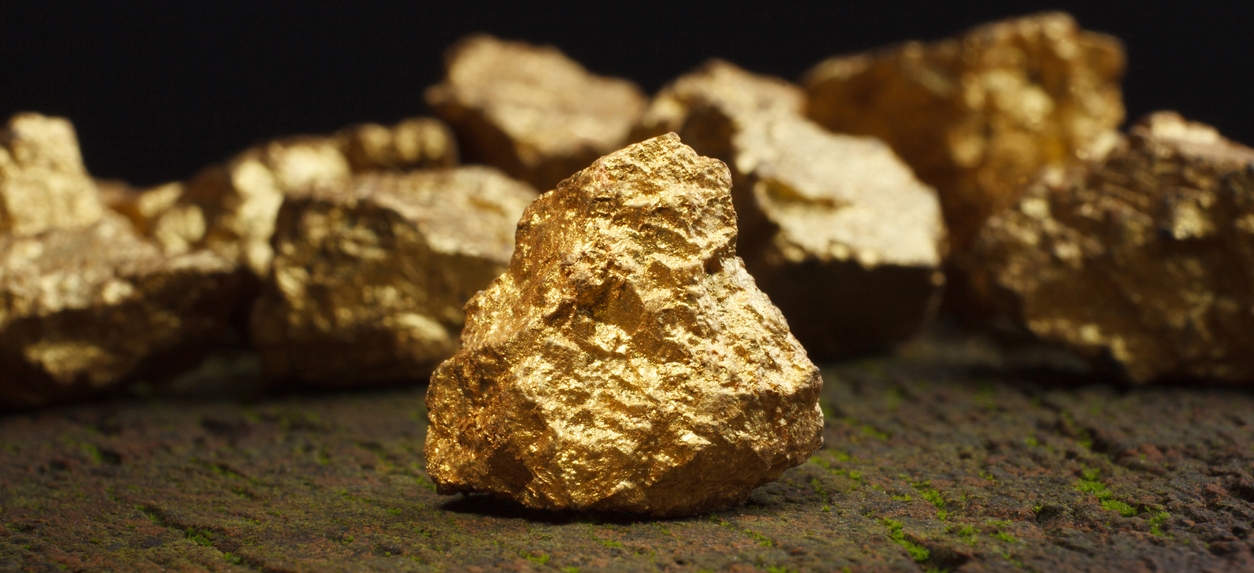
Gold is a precious metal, and trace amounts are used to make iPhones. It is a good conductor of electricity and is thus used as a conductor in an iPhone.
It is the most valuable element to be used in an iPhone, but not the only valuable one.
Recycling old iPhones could yield large quantities of gold. According to research, a ton of ore from the Yanacocha gold mines would give 0.03 oz. of gold. A ton of iPhones would yield 9.72 oz., 324 times more. [9]
10. Silver
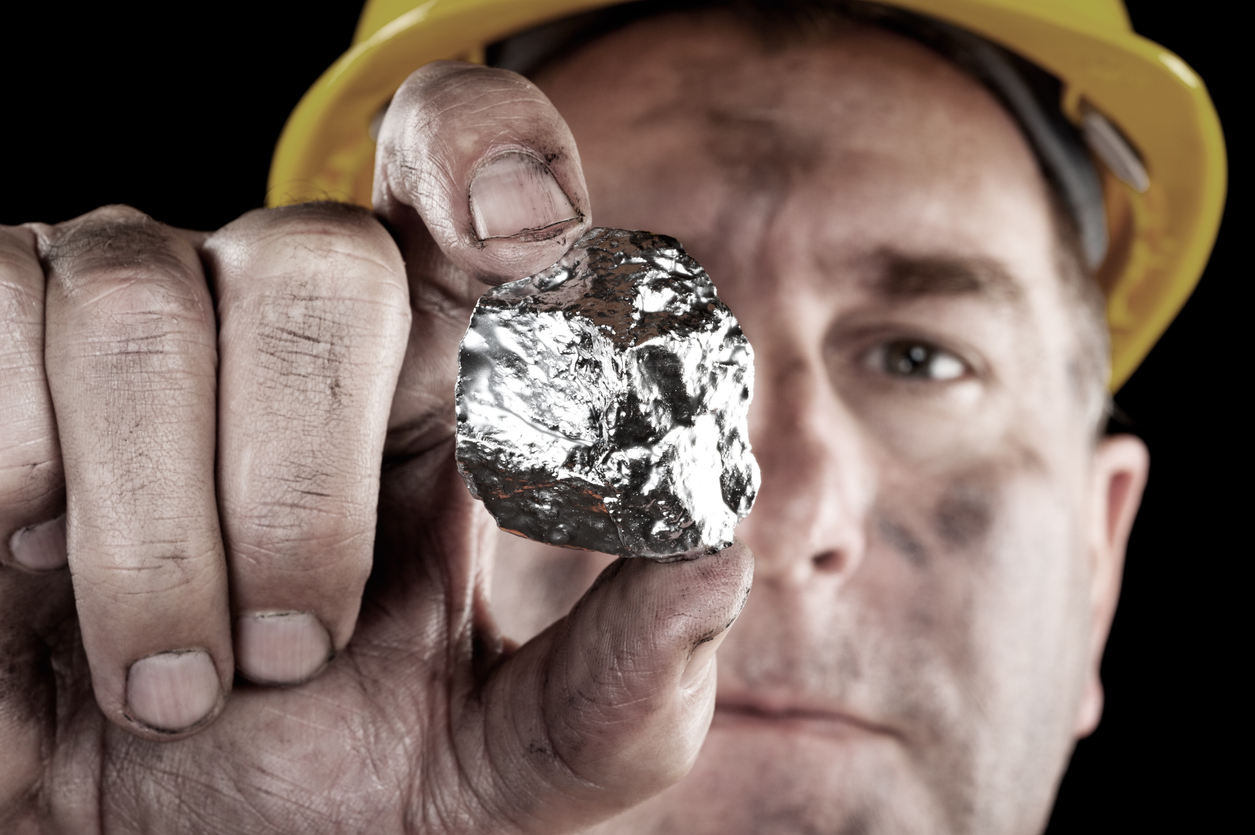
Silver is a soft, shiny metal and an extremely good conductor of electricity. Silver is usually extracted as a by-product while mining other metals, including gold, silver, nickel, and zinc. It is produced from refining the ores or by the electrolytic refining of copper.
Mexico is the world’s top silver producer, producing 178 million ounces of silver in 2020 alone. It is followed by Peru and then China.
Silver is a highly reflective metal that gives it a shiny appearance. Thus. It is popularly used to make jewelry. Since it is a good conductor of electricity, it is used as a conductor in batteries and electrical contacts.
In iPhones, silver, copper, gold, and tungsten are used for electrical connections. Within the smartphone, it is found in its circuit board.
According to a survey, recycling iPhones can extract large amounts of silver. While mining and extracting silver from a ton of Cannington Silver Mines in Australia would give 14.81 oz. of silver, extracting silver from a ton of iPhones would give 97.21 oz. of silver. This is 6.5 times more silver than from the mine. [10]
Conclusion
Metals are necessary elements that go into the production of an iPhone. However, mining and extracting them have detrimental effects on the environment as well as the health of populations. Mining often also involves child labor which makes it a further issue.
Like many other companies, Apple is moving towards cleaner and safer methods of extracting metals and stopping imports from areas that practice child labor.
References
- https://www.businessinsider.com/how-much-metal-in-an-iphone-2018-6
- https://storymaps.arcgis.com/stories/791c02e17f1443e7a1ec48633c135c67
- https://www.visualcapitalist.com/extraordinary-raw-materials-iphone-6s/
- https://www.vice.com/en/article/433wyq/everything-thats-inside-your-iphone
- https://www.mecmining.com.au/the-top-10-metals-and-minerals-powering-your-mobile-phone/
- https://www.vice.com/en/article/nz7kwm/the-periodic-table-of-iphone-elements
- https://www.ecocenter.org/newsletter/2012-10/hold-phone-tests-find-hazardous-chemicals-iphone-5-samsung-galaxy-s-iii-and-other.
- https://www.mecmining.com.au/the-top-10-metals-and-minerals-powering-your-mobile-phone/
- https://www.911metallurgist.com/mining-iphones/
- https://www.911metallurgist.com/mining-iphones/


